Add this eBook to your basket to receive access to all 286 records. Our indexes include entries for the spelling townend. In the period you have requested, we have the following 286 records (displaying 231 to 240): These sample scans are from the original record. You will get scans of the full pages or articles where the surname you searched for has been found. Your web browser may prevent the sample windows from opening; in this case please change your browser settings to allow pop-up windows from this site. Estates of the Deceased: Executors: Yorkshire
(1912)
Notices re claims on estates of the deceased, mostly pursuant to 22 & 23 Vic. c.35, An Act to Further Amend the Law of Property and to Relieve Trustees, also known as the Law of Property Amendment Act. These notices usually give the full name and final address of the deceased, date of death, where the will was proved or administration granted, and the full names of the executors or administrators, both of which are included in this index. October 1912. | Sample scan, click to enlarge
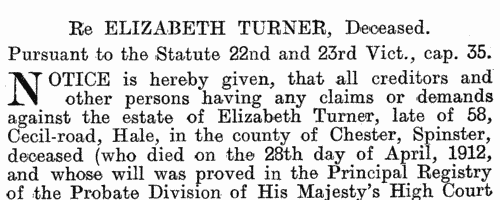
| Civil Servants and Office Holders
(1913)
The Imperial Calendar gives lists of officials and office-holders throughout England, Wales, Scotland and Ireland
| Sample scan, click to enlarge
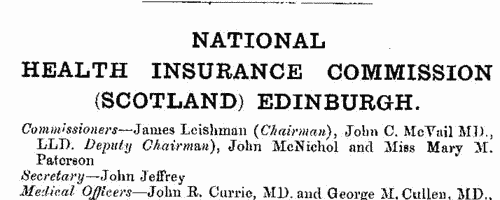
| Boys entering Fettes College, Edinburgh
(1917)
Fettes College, Edinburgh, was opened in 1870 under the terms of a trust 'for maintenance, education, and outfit of young people whose parents have either died without leaving sufficient funds for that purpose, or who, from innocent misfortune during their own lives, are unable to give suitable education to their children'. In 1923 this edition of the Fettes College Register was published; in it the compilers sought to set out for each boy who had attended the college a brief synopsis of what was known about his time at the school, his subsequent career, and date and place of death, or address as of 1923. Of course, for most of the boys entering the school after 1916, they were still at school, and their career was still ahead of them. After each name there is a letter in brackets indicating the house to which the pupil belonged - (C.) Carrington House; (G.) Glencorse House; (K.) Kimmerghame House; (M.) Moredun House; (S.) Schoolhouse. An asterisk indicates that the boy was a foundationer, i. e. supported by the foundation; a dagger that he was a foundation scholar. VIA. indicates Upper Form; Mods. Modern School; Army Cl., Army Class; S. P., School Prefect; xx. First Rugby Football Twenty; xv. First Rugby Football Fifteen; xx. cap. Caps occasionally given to the five (or fewer) next to the First Fifteen after 1875; xi. First Cricket Eleven; viii. Gymnastic Eight; Trs. Prizes and Exhib., Trustees' Prizes and Exhibitions; Govs. Prizes and Exhib., Governors' Prizes and Exhibitions; Schol., scholarship; M., married. Month and year of birth is given in square brackets. | Sample scan, click to enlarge
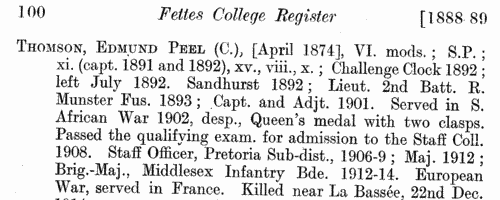
| Military Medal
(1918)
King George V approved the award of the Military Medal for bravery in the Field to these non-commissioned officers and men 6 August 1918. | Sample scan, click to enlarge
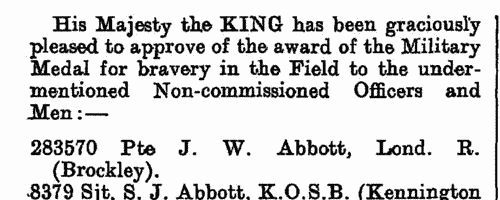
| Workers from Mitchells & Butlers Ltd, of Cape Hill Brewery, Smethwick, who fought in the Great War
(1919)
The Roll of Honour for the firm lists the men who joined his Majesty's forces, giving for each his surname and initials. | Sample scan, click to enlarge

| Naval Officers
(1920)
The alphabetical list of officers on the Active List of the Royal Navy and Royal Marines (RM) and of the Retired and Emergency Officers serving gives: number of ship or where otherwise serving; name (surname, first christian name and initials); rank; and the dates of their seniority. This is the list from the March 1920 edition of the Navy List, corrected to 18 February 1920.
| Sample scan, click to enlarge
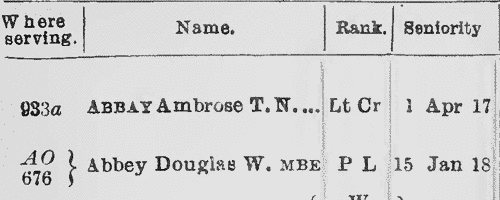
| Residents of Spittal, Berwick-upon-Tweed (1921)
Kelly's (Slater's) Royal National Directory of Scotland extended to include the English borough of Berwick-upon-Tweed and its dependencies of Tweedmouth, Spittal and Ord. In each case there were three listings: Private Residents; Commercial; Farmers. This is the Commercial section for Spittal.
| Sample scan, click to enlarge
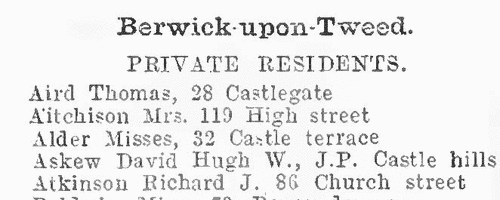
| Convicts released from prison on licence wanted by the police
(1923)
The Police Gazette was published by Authority by the London Metropolitan Police, and circulated, as confidential, to the police forces throughout Britain and Ireland. The contents were based on the information routinely submitted to the Criminal Record Office. One of the regular features was a section entitled 'Convicts on Licence, Persons under Police Supervision and others whose apprehensions are sought for failing to comply with the requirements of the Prevention of Crimes Act'. The details given are: the convict's full name (in bold), with any aliases; C. R. O. number, year of birth, height, complexion, hair colour, eye colour, distinguishing marks such as scars; occupation; birthplace. There then follows a resume of the previous conviction and details of release; reason for revocation of the licence (usually failure to report to the police); name of the officer proving service of the notice; name of the officer proving identity; previous convictions; names of police forces that had had contact with the indivudual in the past. Often there is a police portrait. Variations of surname spelling and aliases are noted in the descriptions, and these variants and aliases have also been indexed. This index covers ordinary convicts; there is a separate index for those released on licence from borstal institutions. | Sample scan, click to enlarge
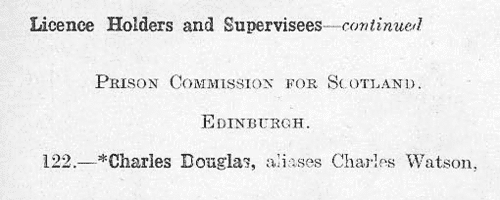
| Medical Practitioners in London
(1926)
The Medical Directory was split into several sections. The London section covered all medical practitioners resident within the London postal district. Each year a schedule was sent to each doctor to be returned to the publishers, so as to keep the directory up to date. In the directory the doctor's name is given first, in bold, surname first, in capitals; then current address. Next are the qualifications; the italic abbreviations in parentheses following the qualifications indicate the medical school at which they were gained. Then there is a list of posts and honours within the profession, starting with those then current; previous posts are preceded by the word 'late'. Finally, brief details are given of any publications. | Sample scan, click to enlarge
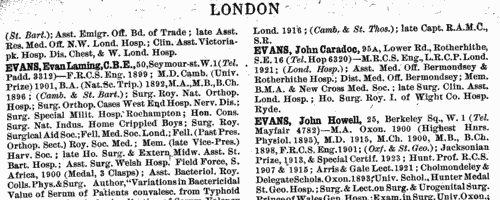
| Medical Practitioners in the Provinces
(1926)
The Medical Directory was split into several sections. The Provinces section covered all medical practitioners resident in England outside the London postal district (except those in Monmouthsire, who were listed under Wales). Each year a schedule was sent to each doctor to be returned to the publishers, so as to keep the directory up to date. In the directory the doctor's name is given first, in bold, surname first, in capitals; then current address. Next are the qualifications; the italic abbreviations in parentheses following the qualifications indicate the medical school at which they were gained. Then there is a list of posts and honours within the profession, starting with those then current; previous posts are preceded by the word 'late'. Finally, brief details are given of any publications. | Sample scan, click to enlarge

|
Research your ancestry, family history, genealogy and one-name study by direct access to original records and archives indexed by surname.
|











